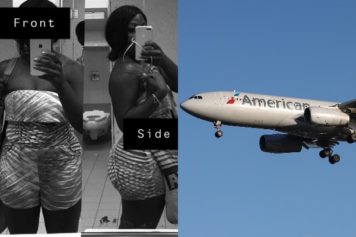It could be a Hollywood script, but it is the real-life story of how US Airways Group snagged a merger deal with bankrupt American Airlines.
There was even a code name used by US Airways and its advisers when communicating internally about their strategy – “Tetris,” named after a video game that created squares to fill in spaces in a grid.
Tetris stood for the gaps in US Airways’ and American’s route networks, the Midwest and East Coast, respectively.
US Airways set its sights on combining the same day that American filed for bankruptcy reorganization, Nov. 29, 2011.
A key turning point was the support by American’s labor unions. American pilots’ former president, Capt. David Bates, and flight attendants’ president, Laura Glading, met a week apart in New York with US Airways President Scott Kirby.
American pilots also had a code name for the private talks: “Buffalo,” a reference to Buffalo, N.Y., where American flew but had few connections to the Eastern Seaboard.
Here is how the deal went down.
Among American’s many lawyers was Harvey R. Miller, who over the decades had made Weil, Gotshal & Manges of Manhattan a powerhouse in bankruptcy law. They were involved in such notable bankruptcies as Texaco, Drexel Burnham Lambert, R.H. Macy, Enron, and Lehman Brothers.
In 2005, as managing partner at the investment bank Greenhill & Co., Miller represented then-America West CEO Doug Parker in acquiring US Airways in Chapter 11.
This time, Miller was on the other side.
In January 2012, US Airways had assembled its team: Latham & Watkins, corporate and bankruptcy lawyers, among others; Barclays, the investment bank; and Millstein & Co., restructuring experts led by Jim Millstein, the former U.S. Treasury official who engineered the federal government’s restructuring of American International Group (AIG).
From the start, US Airways knew two things: American was not in such bad financial shape that it couldn’t exit bankruptcy as a standalone company, and that American would resist a merger.
Setting the trap
Parker telephoned American CEO Tom Horton early on to say there were advantages to merging the two companies in Chapter 11. Horton said not now, maybe later.
“In light of the unwillingness of Horton to open the front door, we devised a strategy to get in through the backdoor,” said Millstein. “That was to go directly to American’s most important creditors, its unions, and then its bondholders.”
The strategy was to convince anyone who would listen that a merger made financial sense. US Airways was the fifth-largest U.S. airline. American was No. 3. Together they would be No. 1.
In February, Kirby, the US Airways president, made power-point presentations to Wall Street analysts and aviation industry consultants. The pilots’ union at American heard about Kirby’s presentation – and asked for a briefing.
American was seeking deep concessions from its workforce. The unions agreed to pay-and-benefit cuts in 2003 to keep American afloat, and had been negotiating since 2008 for new contracts.
Bates and another American pilot, Dennis Tajer, met Kirby for dinner March 12 in a secluded dining room at Oceana restaurant in New York.
“We talked about all the important stuff, the network stuff – how if you integrate the US Airways and American networks, we will be No. 1 in the East and No. 1 in the center of the country, and No. 3 in the West,” Bates said. “They were going to offer us a significantly better compensation package than American was willing to. So there wasn’t much not to like.
“Kirby asked, ‘What’s next?’ I said, ‘Let’s meet with Mr. Parker and let’s do it as soon as we can.’ ”
Bates flew to Phoenix, where US Airways is based, with Tony Chapman, union vice president, and had dinner with Parker. Soon after, a large union contingent went back to Phoenix. “Security was a big thing,” Bates said. “I was careful to brief my whole team – no insignias, nothing that says American Airlines on it. Don’t talk to anybody”…
Read More: philly.com


